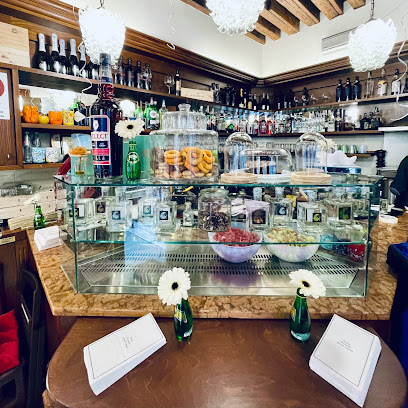
Discovering the Venetian Arsenal: A Maritime Marvel
Explore the Venetian Arsenal, a historic shipyard that showcases Venice's rich maritime heritage and offers a unique glimpse into its glorious past.
The Venetian Arsenal is a historic shipyard and naval depot that played a crucial role in Venice's maritime power. As a tourist, you'll be mesmerized by its rich history, impressive architecture, and the stories that echo through its ancient walls. This unique location offers a glimpse into the once-mighty naval empire of Venice, making it a must-visit for history enthusiasts and casual travelers alike.
A brief summary to Venetian Arsenal
- Venice, Metropolitan City of Venice, 30122, IT
- Visit website
Local tips
- Consider joining a guided tour to fully appreciate the history and significance of the Arsenal.
- Check the schedule for any special exhibitions or events that may be happening during your visit.
- Visit early in the day to avoid crowds and capture stunning photographs of the architecture.
- Wear comfortable shoes, as you'll want to explore the vast grounds and enjoy walking through the historic areas.
Getting There
-
Walking
If you are in Castello, find your way to the main street, Via Garibaldi. Head southeast towards the waterfront. As you reach the waterfront, look for the signs directing you to the Arsenale. Follow the signs along the Riva dei Sette Martiri, and continue walking until you reach the entrance of the Venetian Arsenal at the end of the path. The distance is approximately 1 kilometer and should take around 15-20 minutes on foot.
-
Vaporetto (Water Bus)
From any point in Castello, make your way to the nearest Vaporetto stop. The most convenient stop is likely 'Arsenale' on line 1 or line 5.1. Purchase a ticket from the ticket machine or ticket office; a single journey costs around €7.50. Once on the Vaporetto, enjoy the scenic ride across the lagoon, and disembark at the Arsenale stop. The entrance to the Venetian Arsenal is a short walk from the Vaporetto stop.
Discover more about Venetian Arsenal
Iconic landmarks you can’t miss
Riva degli Schiavoni
0.5 km
Explore Riva degli Schiavoni, Venice's stunning waterfront promenade, filled with history, culture, and breathtaking views along the Grand Canal.

Riva dei Sette Martiri
0.5 km
Discover the tranquil beauty of Riva dei Sette Martiri, a serene promenade in Venice boasting stunning lagoon views and rich history.
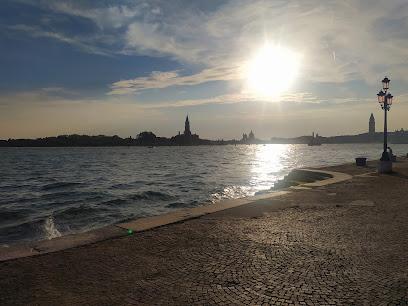
Residenza Veneziana
0.5 km
Discover the enchanting charm of Venice at Residenza Veneziana, your cozy bed and breakfast offering authentic experiences and warm hospitality.

Ponte dei Carmini
0.5 km
Experience the serene beauty of Ponte dei Carmini, a charming bridge in Venice, where history meets breathtaking views and local culture.

Maximilian d'Asburgo
0.7 km
Explore the historical landmark of Maximilian d'Asburgo in Venice, where the echoes of the past blend with stunning architectural beauty.

Vestigia della ex Chiesa di Sant'Antonio di Castello
0.7 km
Explore the serene Vestigia della ex Chiesa di Sant'Antonio di Castello, a hidden historical landmark in Venice that offers a glimpse into the city's rich past.

Foresteria Valdese Venezia
0.7 km
Experience the charm of Venice at Foresteria Valdese Venezia, a cozy holiday home offering comfort and local culture in the heart of the city.

Ponte della Paglia
0.7 km
Explore the enchanting Ponte della Paglia in Venice, where history and breathtaking views of the Grand Canal come together to create unforgettable memories.

Campanile di San Pietro di Castello
0.7 km
Explore the serene Campanile di San Pietro di Castello, a historical landmark in Venice offering breathtaking views and a glimpse of authentic Venetian life.

Bridge of Sighs
0.7 km
Discover the romance and history of Venice at the Bridge of Sighs, a stunning architectural gem that connects the past with the beauty of the present.

Campo San Piero de Casteo
0.7 km
Experience the serene beauty of Campo San Piero de Casteo, a hidden garden in Venice, perfect for relaxation and picturesque strolls.

Campo Santa Maria Formosa
0.7 km
Experience the enchanting essence of Venice at Campo Santa Maria Formosa, where history, architecture, and local culture blend beautifully.

Campo Santa Maria Formosa, 5263
0.7 km
Experience the charm of Campo Santa Maria Formosa, a historic square in Venice filled with stunning architecture, vibrant culture, and local delights.

Vecchia Murano V.M. srl
0.7 km
Explore the exquisite craftsmanship of Murano glass at Vecchia Murano, a treasure trove of unique glass art in the heart of Venice.
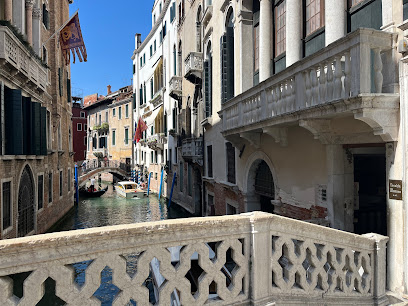
Scala dei Giganti
0.7 km
Explore the grandeur of Scala dei Giganti, a monumental staircase in Venice that reflects the city's rich history and artistic excellence.

Unmissable attractions to see
Venetian Arsenal
0.0 km
Discover the Venetian Arsenal: a historic site that reveals the maritime heritage and shipbuilding legacy of Venice's storied past.

Chiesa Parrocchiale di San Martino di Castello
0.1 km
Explore the serene Chiesa Parrocchiale di San Martino di Castello, a hidden Catholic church gem in Venice's Castello district, showcasing beautiful architecture and rich history.

Venice Biennale - Piccolo Theatre Arsenale
0.2 km
Discover the essence of performing arts at the Piccolo Theatre Arsenale in Venice, a cultural gem of the renowned Venice Biennale.

Campiello de la Pescaria
0.2 km
Experience the vibrant charm of Campiello de la Pescaria, a picturesque square in Venice known for its seafood market and rich local culture.

Treasures of Venice: private boat tours
0.2 km
Explore Venice's enchanting canals with private boat tours, offering a unique and personalized experience in the heart of this iconic city.

Museo Storico Navale di Venezia
0.2 km
Explore the rich maritime heritage of Venice at the Museo Storico Navale, featuring fascinating exhibits and artifacts from Italy's naval past.
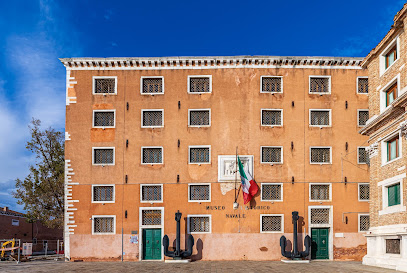
Campo Bandiera e Moro
0.2 km
Explore Campo Bandiera e Moro, a historical landmark in Venice, where culture, charm, and history converge in a captivating setting.

Bragora Gallery
0.3 km
Discover Bragora Gallery in Venice, a unique art gallery showcasing contemporary works from emerging and established artists in a serene setting.

Pontile Cornoldi - Venezia
0.3 km
Discover the beauty of Venice at Pontile Cornoldi, where scenic waterfront views and local charm meet in a picturesque promenade.

Campo de la Celestia
0.3 km
Discover the tranquil beauty of Campo de la Celestia, a peaceful town square in Venice surrounded by stunning architecture and local charm.

Scuola di San Giorgio degli Schiavoni
0.3 km
Explore the stunning frescoes and rich history of Scuola di San Giorgio degli Schiavoni, a hidden gem in the heart of Venice, Italy.

Church of the Pietà - Saint Mary of the Visitation
0.4 km
Discover the enchanting Church of the Pietà in Venice, a Baroque masterpiece that intertwines art, music, and history in a serene setting.

Vivaldi church
0.4 km
Explore the serene beauty and rich history of Vivaldi Church, a hidden gem in Venice celebrating the legacy of the great composer.

Chiesa di San Giorgio dei Greci
0.4 km
Discover the stunning Chiesa di San Giorgio dei Greci in Venice, a serene Greek Orthodox church filled with breathtaking art and rich cultural history.

Best Photo Tour Venice - Marc De Tollenaere
0.4 km
Explore the beauty of Venice through photography with expert guidance from Marc De Tollenaere on an unforgettable photo tour.
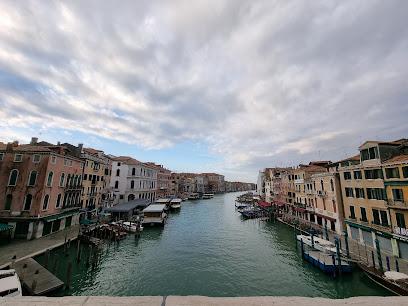
Essential places to dine
Ristorante Bacarandino ai Corazzieri
0.2 km
Savor authentic Venetian dishes at Ristorante Bacarandino ai Corazzieri – where tradition meets taste in Venice's enchanting atmosphere.

Hostaria Castello
0.3 km
Experience authentic Venetian cuisine at Hostaria Castello, where tradition meets flavor in the heart of Venice.

Bacaretto Cicchetto
0.3 km
Experience authentic Italian cuisine at Bacaretto Cicchetto in Venice - where traditional flavors meet vibrant atmosphere.

Local
0.3 km
Experience authentic Venetian cuisine at Local – where fine dining meets the heart of Italy's culinary traditions.

Nevodi
0.4 km
Discover authentic Italian cuisine at Nevodi, where fresh seafood meets traditional Venetian hospitality in the heart of Venice.

Restaurant Terrazza Danieli
0.6 km
Experience luxurious dining at Restaurant Terrazza Danieli with stunning views and exquisite Italian cuisine on Venice's Grand Canal.

Antica Osteria Ai Tre Leoni
0.6 km
Discover Antica Osteria Ai Tre Leoni: A delightful restaurant in Venice offering authentic Italian cuisine in a charming setting.
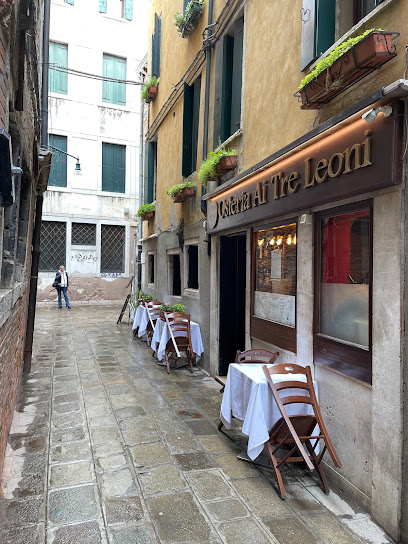
Il Ridotto Restaurant
0.6 km
Experience the best of Venetian cuisine at Il Ridotto - where tradition meets innovation in every dish.
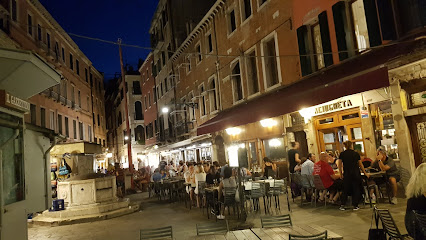
Ristorante Da Carletto
0.8 km
Experience authentic Italian cuisine at Ristorante Da Carletto in Venice—a hidden gem offering delightful flavors in a cozy atmosphere.

Osteria Da Bubi
0.8 km
Discover the heart of Venetian cuisine at Osteria Da Bubi – where tradition meets flavor in every dish.

Osteria alle Testiere
0.8 km
Experience authentic Venetian cuisine at Osteria alle Testiere, where fresh seafood meets traditional recipes in a cozy setting.

Ristorante Centrale Pizzeria
0.8 km
Experience authentic Italian cuisine at Ristorante Centrale Pizzeria in Venice – where every bite tells a story.

Al Chianti
0.8 km
Discover authentic Italian flavors at Al Chianti, where exquisite seafood meets traditional recipes in the heart of Venice.

Ristorante ai Barbacani
0.8 km
Experience authentic Venetian seafood at Ristorante ai Barbacani – where tradition meets flavor in the heart of Venice.

Baci & Pasta
0.9 km
Experience authentic Italian cuisine at Baci & Pasta in Venice - where fresh flavors meet traditional recipes in a cozy setting.

Markets, malls and hidden boutiques
Domino Arte
0.3 km
Explore the artistic wonder of Domino Arte in Venice, where unique handicrafts and quirky souvenirs await every traveler.

MADONERI
0.4 km
Explore MADONERI in Venice for unique handmade crafts that capture the city's rich artistic heritage.

Marbled Paper and Leather Store (Venetian crafts)
0.4 km
Explore the artisanal wonders of Venice at the Marbled Paper and Leather Store, where traditional craftsmanship meets timeless beauty.

Green Apple
0.5 km
Discover the delectable world of artisanal ice creams at Green Apple in Venice, a sweet retreat for every traveler.

veniceshop.it
0.5 km
Explore an enchanting novelty store in Venice filled with unique souvenirs and artisanal treasures that embody the city's rich culture.

Trilly Collezioni Esclusive
0.6 km
Explore the charm of Venetian craftsmanship at Trilly Collezioni Esclusive, where every handcrafted item tells a unique story of artistry and tradition.

Baby's Boutique
0.6 km
Explore Baby's Boutique in Venice, where every antique tells a story and offers a piece of history to cherish forever.

L'albero Venezia
0.7 km
Explore L'albero Venezia, where unique fashion accessories meet Venetian artistry, perfect for adding a touch of elegance to your style.

NIMA Venice Store
0.7 km
Explore NIMA Venice Store: A Boutique Treasure Trove of Artisanal Goods and Venetian Charm.

Terre sur livre
0.8 km
Explore the vibrant world of Venetian crafts at Terre sur Livre, where unique gifts and local artistry come together in the heart of Venice.

Tutto A 10€
0.8 km
Discover stylish and affordable fashion at Tutto A 10€ in Venice, where every piece is just 10 euros for budget-savvy travelers.

I Tre Mercanti
0.8 km
Discover the flavors of Italy at I Tre Mercanti, Venice's premier gourmet grocery store offering fine wines, artisanal cheeses, and sweet delicacies.

Gift Shop
0.8 km
Explore a charming gift shop in Venice, offering unique local crafts and souvenirs that capture the city's rich cultural heritage.

Giobagnara, Venezia
0.8 km
Explore Giobagnara in Venice for exquisite gifts and authentic Venetian craftsmanship, perfect for capturing the essence of your travels.

Souvenirs venecia low cost
0.8 km
Explore unique and budget-friendly souvenirs at Souvenirs Venecia Low Cost, a treasure trove for tourists in Venice.

Essential bars & hidden hideouts
Alchemia Bar
0.2 km
Experience Venice's cocktail culture at Alchemia Bar, where creativity meets flavor in a vibrant atmosphere.

Snack Bar Castello
0.3 km
Discover the vibrant flavors of Venice at Snack Bar Castello, where delicious snacks meet creative cocktails in a charming atmosphere.

Basegó
0.3 km
Discover the vibrant atmosphere and exquisite cocktails at Basegó, a must-visit cocktail bar in the heart of Venice.
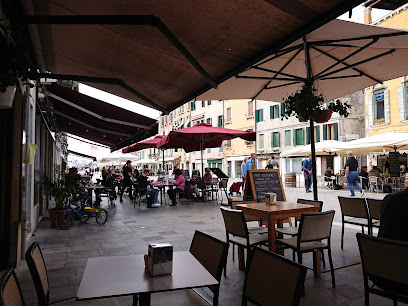
La Barrique Wine Bar
0.3 km
Experience the essence of Italian wines at La Barrique Wine Bar, a charming spot in Venice offering exquisite flavors and a cozy atmosphere.

Bar Melograno
0.3 km
Discover the charm of Bar Melograno, a delightful wine bar in Venice, offering exquisite wines and authentic Italian cuisine.

Riviera del Leon
0.4 km
Discover Riviera del Leon: A vibrant bar in Venice offering stunning views, delightful drinks, and a taste of local culture, perfect for relaxation.

Crazy Bar Venezia
0.4 km
Discover Crazy Bar Venezia, where local culture meets vibrant nightlife in the heart of Venice, perfect for drinks and delicious bites.
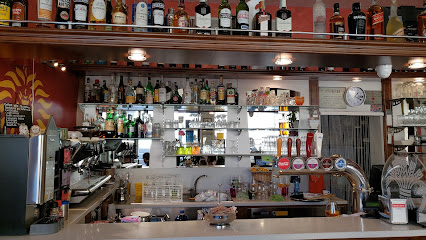
Wine Bar 5000
0.5 km
Experience the charm of Venice at Wine Bar 5000, where exquisite wines and authentic espresso await in a cozy atmosphere.

Bar Dandolo
0.6 km
Experience the elegant charm of Bar Dandolo in Venice, where exquisite drinks meet stunning canal views for an unforgettable escape.

HEY RICH BAR
0.6 km
Experience the vibrant atmosphere and delightful drinks at HEY RICH BAR, a charming spot in Venice perfect for unwinding after a day of exploration.

Bra's Cocktail Bar
0.7 km
Discover the lively Bra's Cocktail Bar in Venice, a vibrant spot for cocktails, delicious food, and an inclusive atmosphere for all.

Peacock bar
0.8 km
Discover the charm of Venice at the Peacock Bar, a hidden gem offering signature cocktails and an inviting ambiance amidst the city's enchanting canals.

Bar Al Campanile
0.8 km
Experience the charm of Venice at Bar Al Campanile, where unique cocktails and warm hospitality await in the heart of the city.

Bar Americano
0.8 km
Discover the enchanting Bar Americano in Venice, where classic cocktails meet vibrant atmosphere near Piazza San Marco.

Il Salotto di San Marco
0.9 km
Experience authentic Venetian flavors at Il Salotto di San Marco, where exquisite small plates and crafted cocktails await in a charming atmosphere.
